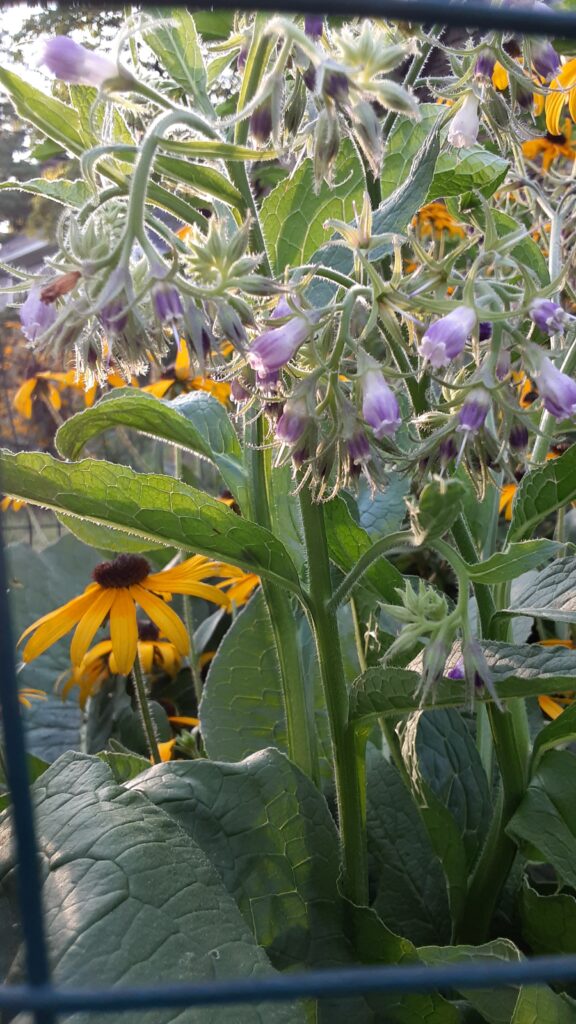The garden has peaked. The milkweed has faded, the rudbeckia is shriveling, and while a few flowers power on, the climactic moment has passed. The big show is about over. This is a good time of year for taking stock, as people do. Did projects go as planned? Did I get the results I wanted? The answer is probably yes, and no. I’m taking a moment to review and remember, hoping to inform my decisions as I approach fall planting. September starts tomorrow.
To start, life handed me lemonade by killing the zoysia in our front yard. New planting requires killing what’s there, which now, fortunately, is nothing. I did a poor job digging up the bed in spring, the plants arrived and I had to hurry, and I’ll be paying the consequences for a long time. I see that now. I won’t have that problem this fall. The question is what to plant. I had more flowers in mind, but this area borders our next-door neighbor’s yard, and they spray for mosquitoes. Yesterday their exterminator sprayed clouds of insecticide on their blooming Prairie Onion, kicking up the butterflies and skippers, and I found this in the yard later that afternoon.
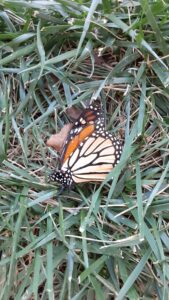
I hope to persuade them to try other methods to eliminate mosquitoes. I’ll keep you posted. However, instead of planting more flowers, perhaps I should plant some kind of buffer. If you have suggestions, I’d love to hear them.
On a more pleasant note, the big addition to our garden this year, which we began planning last fall, is a bed across our front yard. When my husband suggested a sinuous ribbon, I knew that was exactly the right thing to do. It’s like a contour line on a topographic map. I began by digging a bed beside the driveway, spading it up and removing the turf, and then planted plugs bought from Missouri Wildflowers Nursery. The bed was bare and ugly throughout the winter.
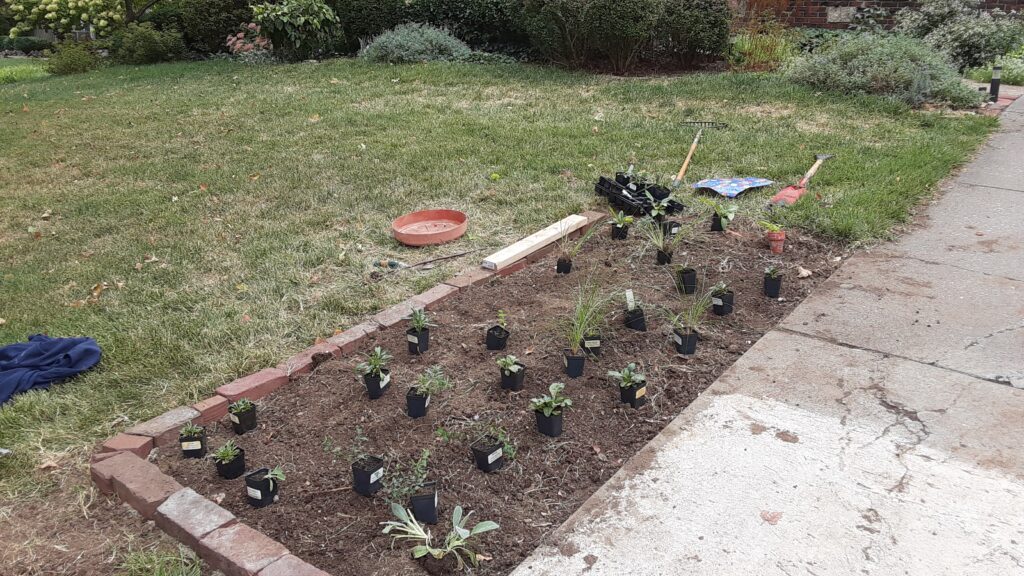
Later, I extended it across the yard, and it was bare and ugly then too.
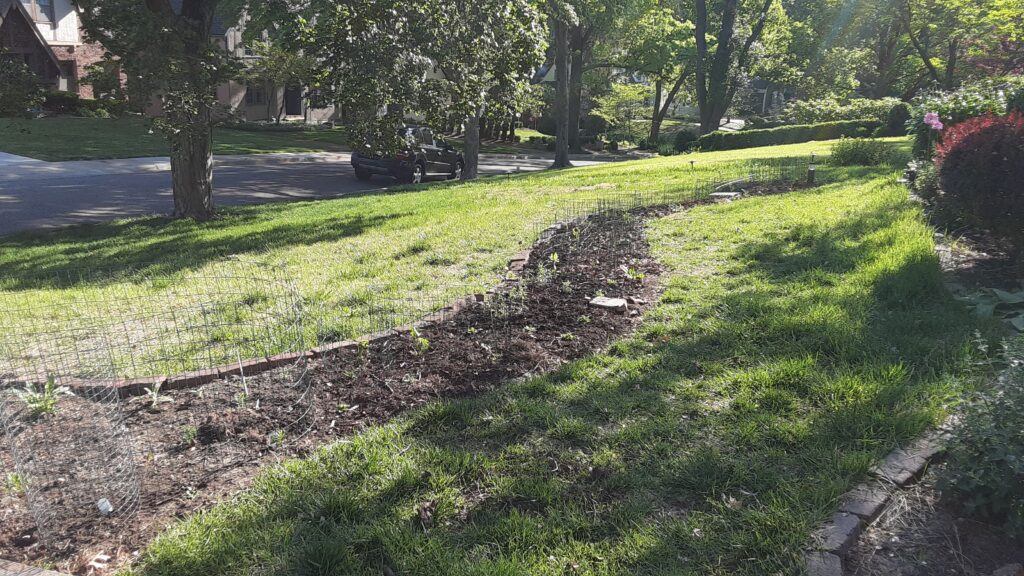
Since this is the front yard, everything needed to be short, under two feet tall, and I wanted to avoid a haphazard groups-of-one look. I created a spreadsheet with plant names, heights, colors, bloom times, and prices from different nurseries. (I’m almost embarrassed to admit this but I suspect some of you do the same.) I wasn’t familiar with some of these plants, I just chose them based on their catalog descriptions.
How did it go? Overall, pretty well. I give the bed a B-plus. It’s been consistently colorful, buzzing with insect activity. Each month brought surprises.
My biggest challenge was rabbits. They were prolific. Instead of a wild garden, this became a caged garden, fenced in by wire contraptions—but that didn’t matter to the rabbits, who ate many plants down to the ground, snapping stems and dropping flowers uneaten on the grass. C’était pénible.
I won’t go on and on about it, but henceforward, right plant, right place means unpalatable to rabbits.
What worked well: A+
Salvias. They’re not native but are much loved by bees, and I like purple flowers. I sowed two types of seed and grew cuttings of another. I’m afraid I’ll get the names wrong but they’re all slightly different. All are wonderful and still blooming now.
Penstemons. Pale beardtongue (Penstemon pallidus) was lovely with white panicle flowers, but Purple beardtongue (Penstemon cobaea) was thrilling. Its big, bell-shaped, purple flowers are dramatic, and its glossy foliage is both soft and slimy, if slimy can be a positive descriptor. I love these.
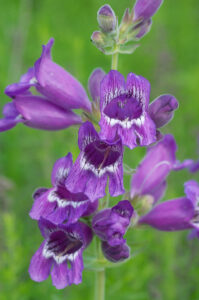
Dittany (Cunila origanoides). I forgot what this was; it bored me all year, not even the rabbits liked the little dark green leaves—until suddenly, wow! They burst out with darling little light purple flowers. Note to self: buy more!
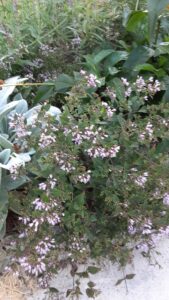
Butterfly Weed (Asclepias tuberosa) has been blooming since June.
What didn’t work as well: B – to C+
Black-eyed Susan (Rudbeckia hirta) and Lance-leaf Coreopsis (Coreopsis lanceolota), a.k.a. rabbit chow. No matter how big they grow, they get eaten. On the other hand, they’re so vigorous, they’re still the primary flowers blooming in the bed. I bought six of each and grew more from seed. However, I don’t need any more.
Spider Milweed (Asclepias viridis). The rabbits didn’t care for this, which is a plus, but it didn’t flower. Maybe next year.
Total failures
Some plants disappeared entirely: Yellow Wild Indigo, Southern Prairie Aster, Cream Wild Indigo (Baptisia bracteate), and Obedient Plant (Physostegia angustifolia). All vanished, eaten by rabbits. I bought three Wild Pinks (Silene caroliniana) which had sweet little flowers early on, but only two survived, I’m not sure why.
I’m not crazy about Slender Mountain Mint (Pycnanthemum tenuifolium).
Some plants volunteered, like comfrey (I believe) pictured below, and a moonflower. The seeds may have been in the compost I used to fill the trench left by removing the grass.
Possibly my experience will help some fellow Kansas City gardener select a few natives for a visible, unforgiving, full sun location infested with rabbits and crickets. In any case, that’s all I have for this week. I’ve ordered some shrubs to pick up at the Deep Roots sale on September 9 at Anita Gorman, and I’ll be back in a week or two to tell you more about those. Thanks for reading!
